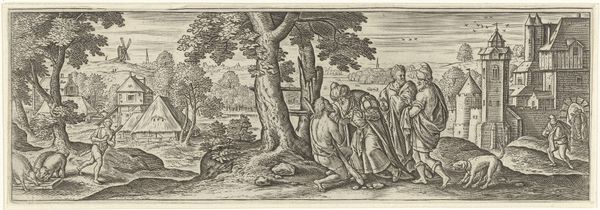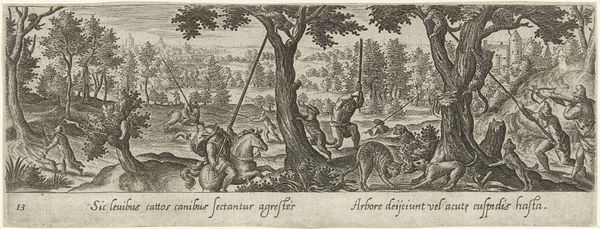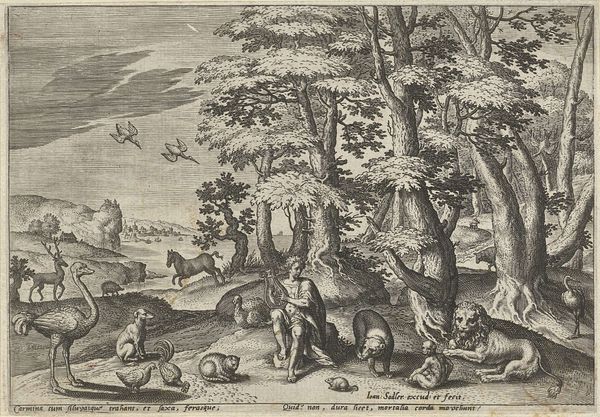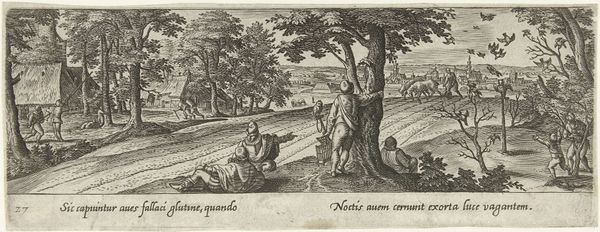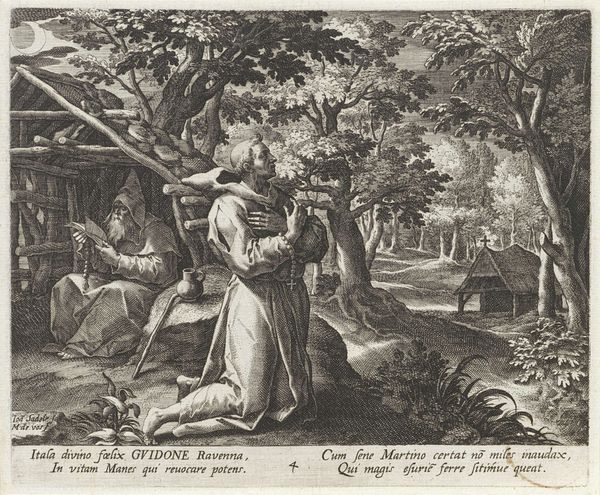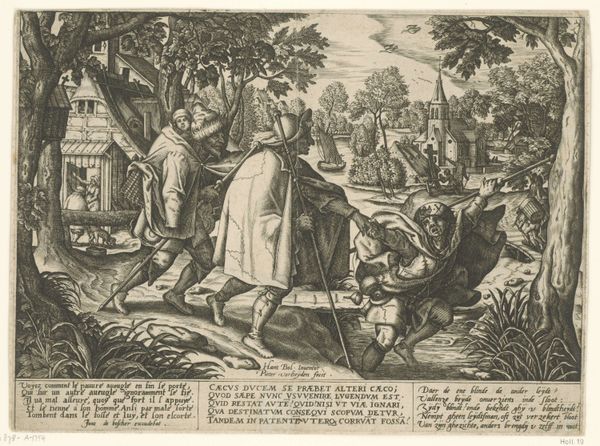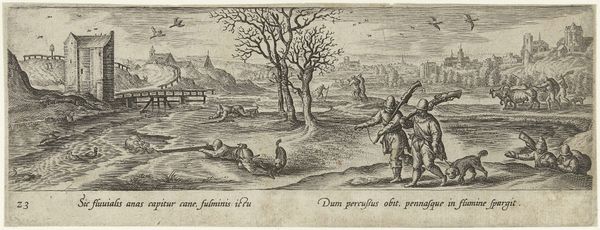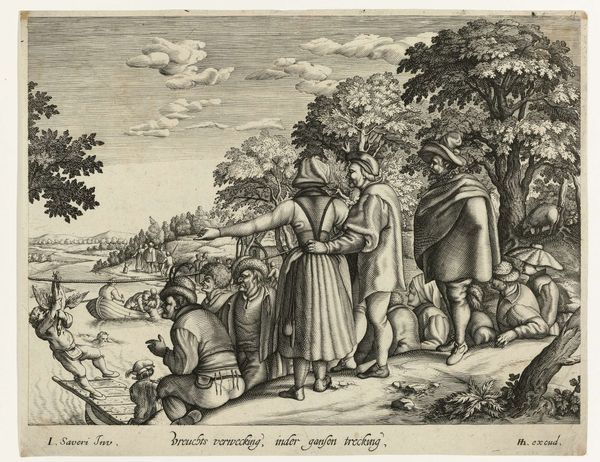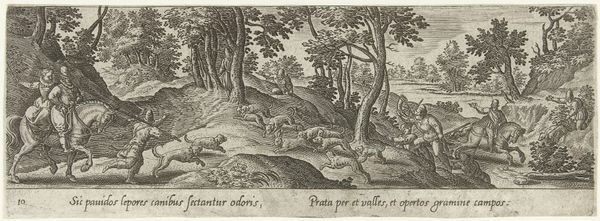
print, etching, engraving
#
baroque
#
mechanical pen drawing
# print
#
pen sketch
#
etching
#
pencil sketch
#
landscape
#
personal sketchbook
#
sketchwork
#
pen-ink sketch
#
pen work
#
sketchbook drawing
#
genre-painting
#
storyboard and sketchbook work
#
sketchbook art
#
engraving
Dimensions: height 81 mm, width 215 mm
Copyright: Rijks Museum: Open Domain
Curator: This is an etching titled "Valkenjacht," or "Falconry," attributed to Philips Galle, dating somewhere between 1582 and 1632. It's currently held in the collection of the Rijksmuseum. What's your initial take on this scene? Editor: Well, chaos, beautifully rendered chaos! A real sense of aristocratic sport gone wild. It feels both elegantly composed and somehow…brutal, you know? All those men on horseback, dogs, birds in frantic flight, it feels like a whole social structure out for blood. Curator: Absolutely. Falconry, particularly during this period, was highly symbolic. It wasn't merely a recreational activity; it represented status, control over nature, and even mirrored the hierarchical relationships within society. The falcon itself became a potent symbol of power and nobility. Editor: So, a kind of performance of dominance? The landscape is almost incidental, right? It's a stage set for this…dance of predation? Look at the almost calligraphic way the lines define the figures. Curator: The linear precision and the composition is very much in line with the Baroque aesthetic, which favored dynamism and elaborate displays. Though, it also incorporates a clear understanding of landscape traditions that preceded it. The detailed foliage, the distant town…these elements all point to a sophisticated understanding of spatial relationships. Editor: It's interesting, that tension between the intensely controlled depiction – every line meticulously placed – and the almost frenetic energy of the scene. And the tiny inscription underneath. Curator: Indeed, these inscriptions often acted as commentaries. This one appears to read "Sic falcone cadit pennis trepidantibus icta", which seems to suggest: thus the falcon falls struck with quivering feathers. Which ties it back to what we've discussed here today. Editor: I keep coming back to the energy of it. It makes me feel uneasy. What can be gained or revealed with images like this? How do they affect us and continue to ripple in our modern psyches? Food for thought, truly!
Comments
No comments
Be the first to comment and join the conversation on the ultimate creative platform.

